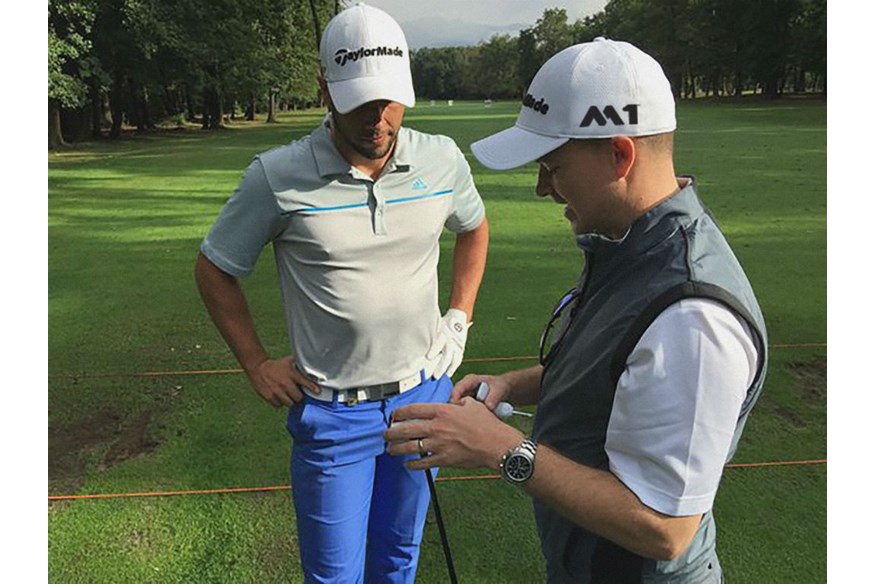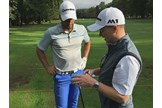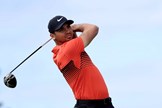Are you giving up 50 yards with your driver?
Last updated:
Daryl Evans, European Tour manager at TaylorMade, makes his living out of fitting the likes of Martin Kaymer, Justin Rose and Dustin Johnson on tour. So who better to explain why it’s worth splashing out on a custom-fitting session…
1 Treat your clubs like your shoes
I don’t know why anyone would start golf and not get custom fit. You don’t have to be a runner to have a perfect set of shoes, so why would you not have a set of clubs that are ideally suited for you to develop your game? If you are going to make improvements, getting fitted is probably the quickest and easiest way to set you up on the right path. And it doesn’t matter what level of golfer you are. There are so many different things we can do to maximise the feel and optimise the ball flight.
2 Get the best tech
Switching to a newer spec can lead to some big gains for players. That’s why the likes of Dustin Johnson and Justin Rose change their equipment so regularly. They are looking for every possible gain they can get, even if it’s just one yard. It shouldn’t be any different for a 20-handicapper. If you are using a 10-year-old driver with no adjustable technology and keep slicing it, surely it makes sense to invest in a fitting to help you hit the ball straighter and longer? I guarantee your handicap will drop by two, three, four or even five shots. Naturally, you are going to enjoy the game more.
3 Learn from a Major champion
Many golfers believe that the technology isn’t that much of an improvement from one model to the next. Historically, Martin Kaymer has been notorious for not changing into our current equipment every year. I remember I was doing some work with him at the US PGA three seasons ago. We were out on the range and he was hitting our RocketBladez and he couldn’t believe how controlled the ball flight was. I explained it was because he’d been using a set of irons that were three or four seasons old. The penny dropped; he realised that he risked being left behind if he didn’t embrace the latest technology. It’s a pretty good benchmark for amateurs to follow.
4 Get an annual check-up
Some pros get fitted once every three months, but your average mid-handicapper should have their clubs checked at least once every year. That’s a pretty good guideline. Your body is constantly changing as you get older.

5 Follow Jason’s lead
Jason Day has made a pretty big swing change over the last year. He was using an R15 driver and had an attack angle of -2 (downward two degrees). He was carrying it about 285 yards. He then made some swing changes and his attack angle has now gone to +1. That changed his launch and spin numbers. His ball speed has also gone up because there’s less friction at impact, and he’s now carrying it between 312 and 315. That’s 30 yards more carry in one year. If he was still using his old driver, he’d probably be shorter than 285, not longer. You’ve got to get the right equipment to suit your swing. Earlier in the year, I was working with six amateurs and the worst yardage gain we saw was 15 yards. The best was around 50.
6 Optimise your ball flight
As a guideline, the average Tour player’s launch angle with a driver ranges between nine and 12 degrees. Depending on the actual figure, the spin rate window would be anywhere between 2,200 and 2,800rpm. Generally, the lower the launch, the higher your spin needs to be to gain the optimal ball flight. In relation to irons, a good ballpark figure for spin is to times the number by a thousand. So if you’re hitting a 7-iron, seven times a 1,000 equals 7,000 rpm. That’s a really good benchmark to work from.
7 Be careful about flattening out your swing
A lot of people are trying to achieve a shallower attack angle because they think it leads to more distance. But that’s not 100% true because the shallower you are, the less accurate you may become. The average driver attack angle of a Tour pro is -1.2. This means they are hitting down on the ball, not up. There are exceptions like Rory, who is +4 or +5. It’s difficult to define what is optimal, but I think -1 or -2 is a pretty good goal to aim for.
8 It’s all about ball speed
On tour, we only communicate in ball speed. Every golf ball is round, so the facts are a lot more accurate than the clubhead. There’s also too much focus on the smash factor. The smash factor is irrelevant because it’s a ratio between clubhead speed and ball speed. The truth is that TrackMan or FlightScope doesn’t measure clubhead speed accurately enough to get the speed bang on.
9 Think before you buy
If you are not 100% sure what clubs are going to be right for you, I would recommend going down to your PGA pro and getting some help from them.
10 Don’t wait to get fitted
If you are making a swing change, you should be fitted anyway as the recommended fitting will help you to achieve your swing goals. As you change your swing, you may need to tweak your equipment.



